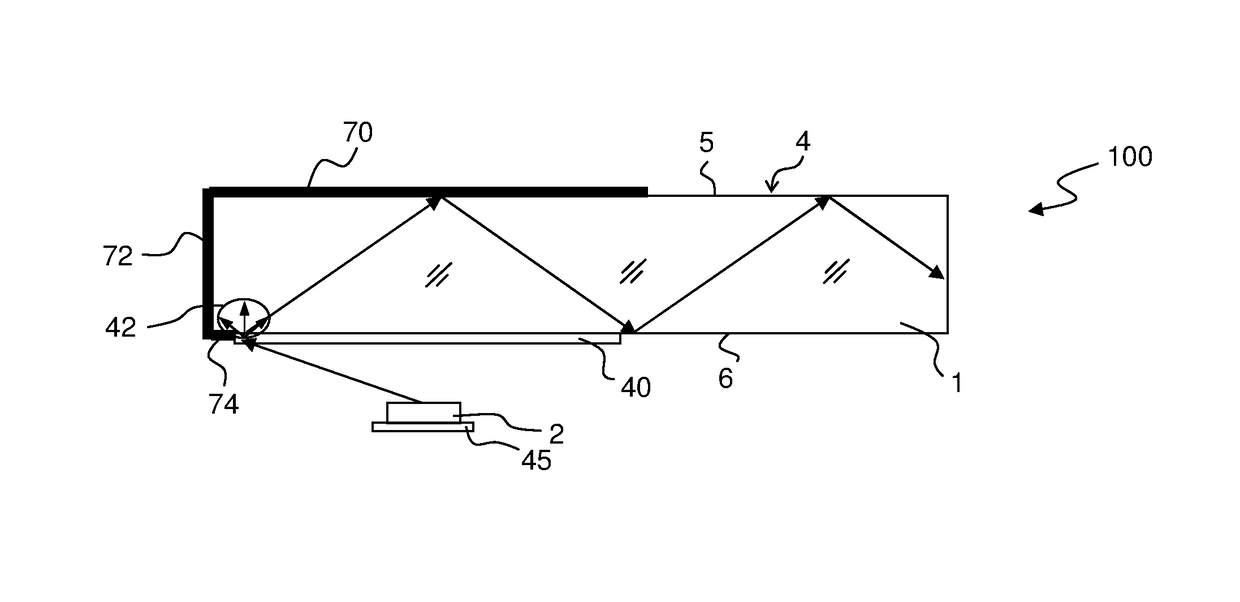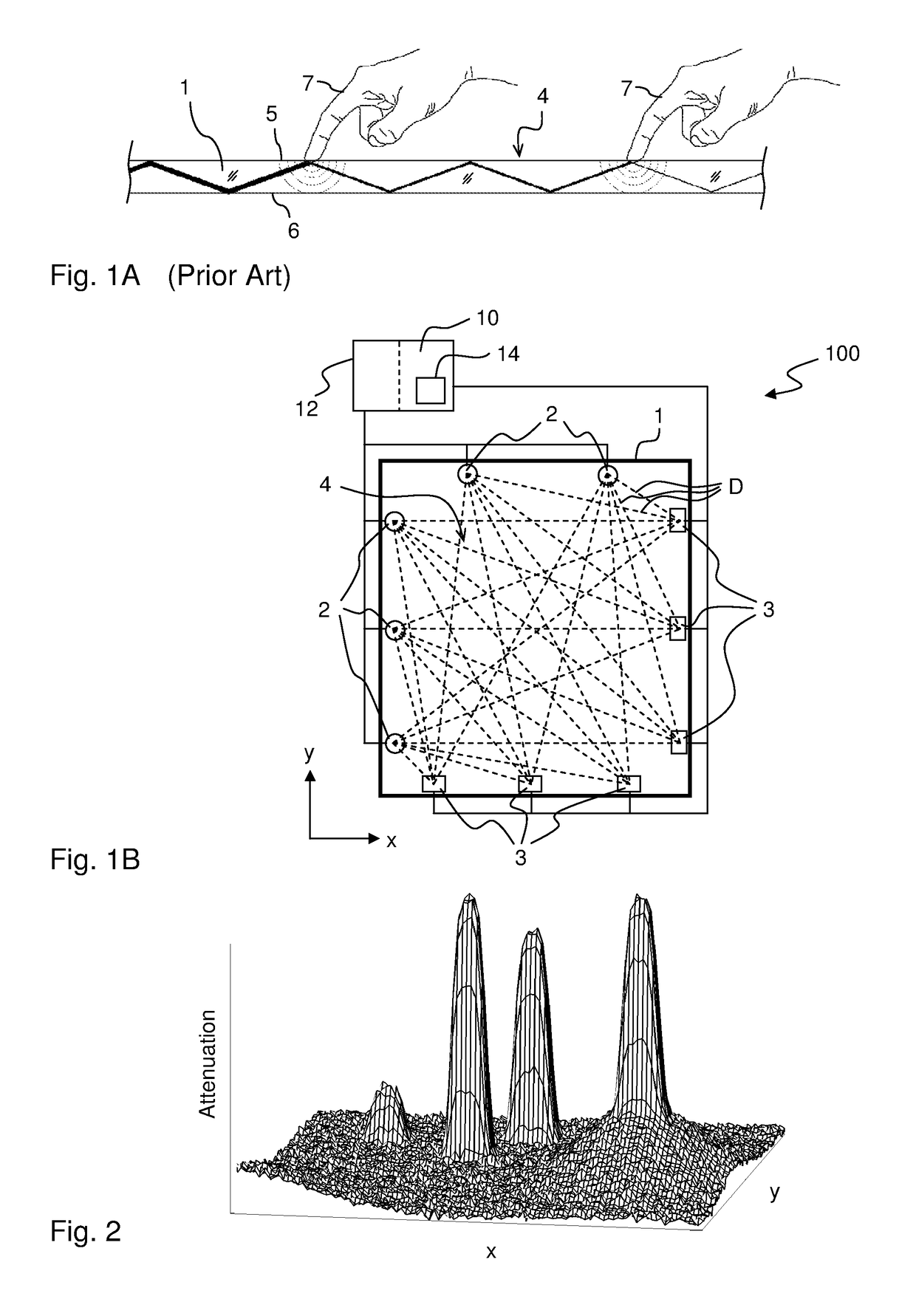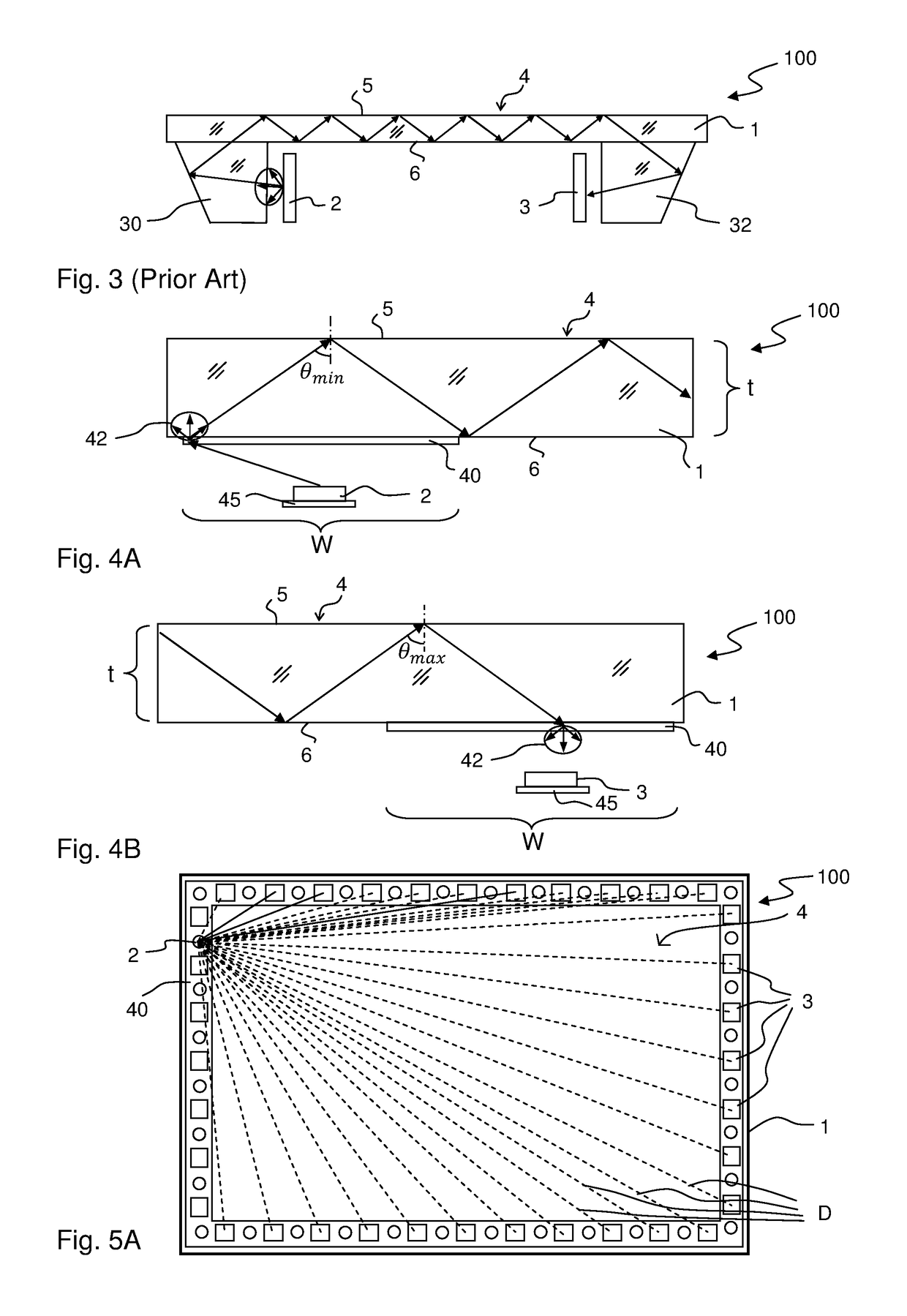Optical coupling in touch-sensing systems using diffusively transmitting element
a technology of optical coupling and transmitting element, applied in the field of touch sensing system, can solve the problems of difficult and/or costly realization, increase the footprint of the touch system, and change in the light received by one or more detectors, etc., and achieve the effect of simple assembly and suited for mass production
- Summary
- Abstract
- Description
- Claims
- Application Information
AI Technical Summary
Benefits of technology
Problems solved by technology
Method used
Image
Examples
Embodiment Construction
[0043]In the following, embodiments of the present invention will be presented for a specific example of a touch-sensitive apparatus. Throughout the description, the same reference numerals are used to identify corresponding elements.
[0044]FIG. 1A illustrates the concept of touch detection based on attenuation by FTIR (Frustrated Total Internal Reflection) of propagating light. According to this concept, light is transmitted inside a panel 1 along a plurality of well-defined propagation paths. The panel 1 is made of solid material in one or more layers and may have any shape. The panel 1 defines an internal radiation propagation channel, in which light propagates by internal reflections. In the example of FIG. 1A, the propagation channel is defined between the boundary surfaces 5, 6 of the panel 1, and the front (top) surface 5 allows the propagating light to interact with touching objects 7 and thereby defines a touch-sensitive region 4 (“touch surface”). The interaction is enabled...
PUM
 Login to View More
Login to View More Abstract
Description
Claims
Application Information
 Login to View More
Login to View More - R&D
- Intellectual Property
- Life Sciences
- Materials
- Tech Scout
- Unparalleled Data Quality
- Higher Quality Content
- 60% Fewer Hallucinations
Browse by: Latest US Patents, China's latest patents, Technical Efficacy Thesaurus, Application Domain, Technology Topic, Popular Technical Reports.
© 2025 PatSnap. All rights reserved.Legal|Privacy policy|Modern Slavery Act Transparency Statement|Sitemap|About US| Contact US: help@patsnap.com



